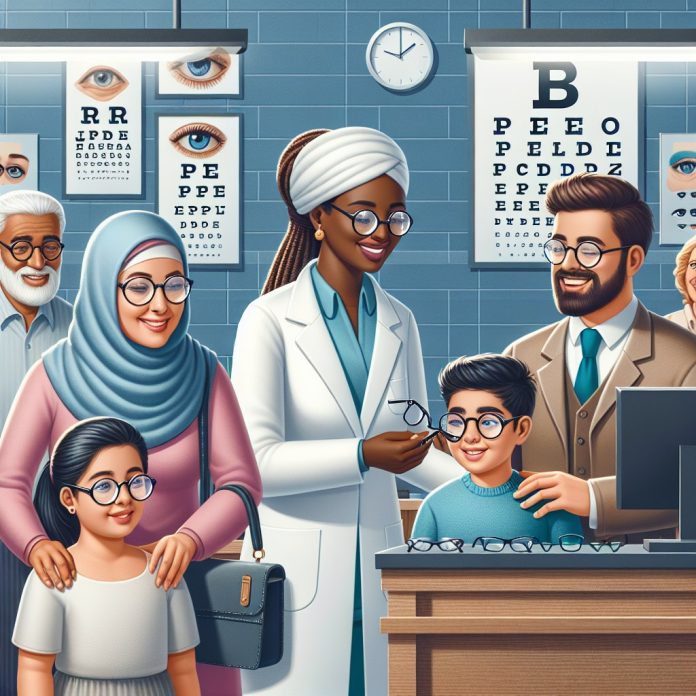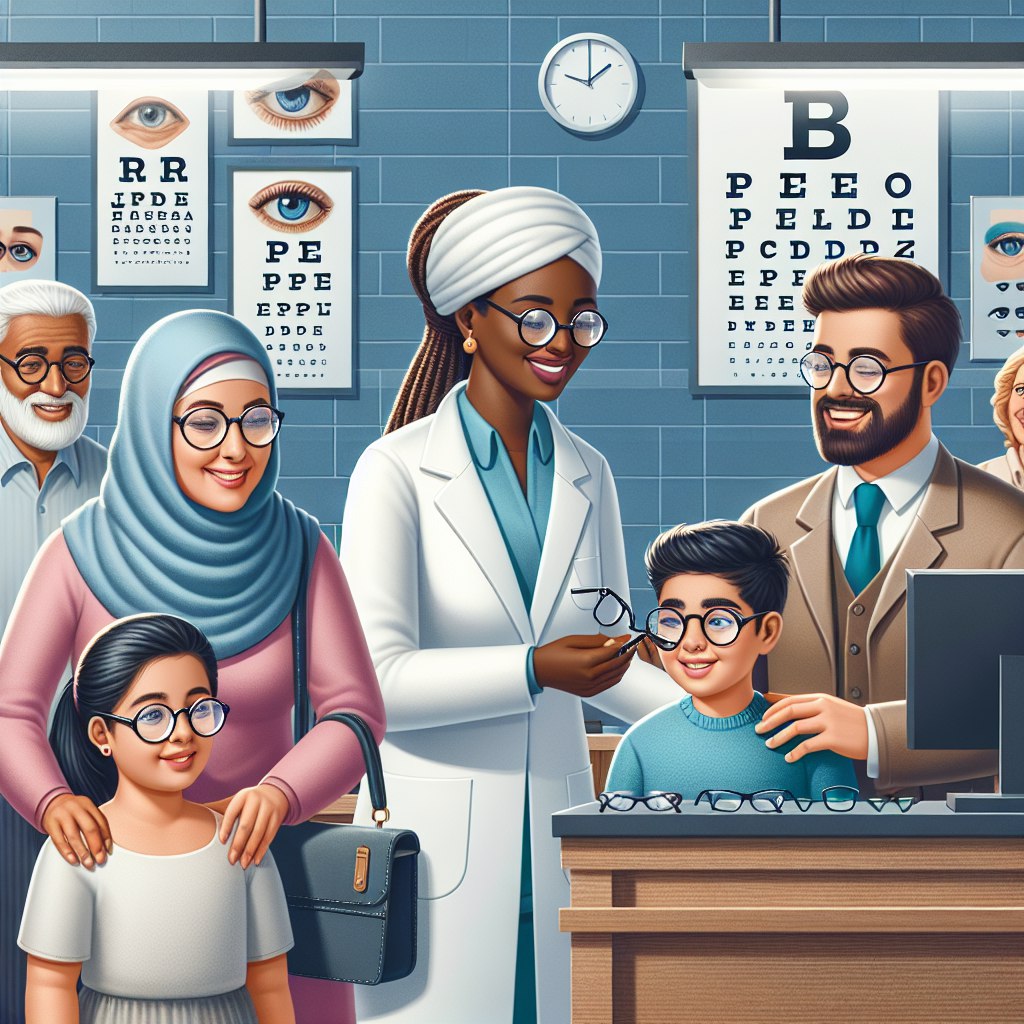
👁️ Introduction
Vision is a crucial part of our daily lives, impacting everything from learning and working to simply enjoying the world around us. Access to quality eye care is essential for maintaining good vision and overall health. Community eye care programs aim to provide comprehensive eye health services to all individuals, regardless of their socio-economic status. This article will delve into the importance of community eye care, its benefits, services offered, and how to access these vital programs.
🌟 The Importance of Community Eye Care
Community eye care plays a pivotal role in ensuring that everyone has access to eye health services. This is particularly important in underserved areas where people might not have the financial means or proximity to access necessary eye care.
1. Addressing Vision Health Disparities
- Equitable Access: Community eye care programs ensure that individuals from all backgrounds receive the eye care they need.
- Reducing Inequalities: By providing services in underserved areas, these programs help reduce health disparities related to vision.
2. Early Detection and Prevention
- Screenings: Regular eye exams can detect vision problems and eye diseases early, preventing severe complications.
- Preventive Care: Community eye care emphasizes the importance of preventive measures to maintain good vision health.
3. Enhancing Quality of Life
- Improved Vision: Access to eye care services can significantly improve individuals’ quality of life by enhancing their vision.
- Overall Health: Eye health is closely linked to overall health, and addressing vision problems can lead to better general health outcomes.
🏥 Benefits of Community Eye Care
Community eye care offers numerous benefits to individuals and the community as a whole.
1. Accessibility
- Local Clinics: Many community eye care programs operate local clinics, making it easier for residents to access services.
- Mobile Units: Some programs offer mobile eye care units that travel to various locations to provide services.
2. Affordability
- Low-Cost Services: Community eye care programs often provide services at low or no cost, ensuring affordability for all.
- Insurance Assistance: Many programs assist with navigating insurance options to reduce out-of-pocket costs.
3. Comprehensive Services
- Full Spectrum of Care: From routine eye exams to treatment for eye diseases, community eye care programs offer a comprehensive range of services.
- Specialized Care: Access to specialists for conditions such as glaucoma, cataracts, and diabetic retinopathy.
4. Education and Outreach
- Community Education: Programs often include educational initiatives to raise awareness about eye health.
- Outreach Efforts: Targeted outreach ensures that vulnerable populations are informed about available services.
🌐 Services Offered by Community Eye Care Programs
Community eye care programs provide a wide array of services to meet the diverse needs of the population.
1. Routine Eye Exams
- Vision Screenings: Regular vision screenings are essential for detecting refractive errors and other vision problems.
- Comprehensive Exams: Detailed eye exams assess overall eye health and detect any underlying conditions.
2. Prescription Glasses and Contact Lenses
- Corrective Lenses: Providing access to prescription glasses and contact lenses to improve vision.
- Affordable Options: Offering low-cost or free corrective lenses for those in need.
3. Treatment for Eye Diseases
- Glaucoma Management: Early detection and management of glaucoma to prevent vision loss.
- Cataract Surgery: Access to cataract surgery for those with vision impairment due to cataracts.
- Diabetic Retinopathy Care: Specialized care for individuals with diabetic retinopathy to prevent complications.
4. Pediatric Eye Care
- Children’s Vision Screenings: Ensuring that children receive regular vision screenings to detect issues early.
- School Programs: Collaborating with schools to provide eye exams and education on eye health.
5. Low Vision Services
- Rehabilitation: Offering rehabilitation services for individuals with low vision to help them maintain independence.
- Assistive Devices: Providing access to assistive devices and technology to enhance vision.
6. Emergency Eye Care
- Urgent Care Services: Immediate care for eye injuries and sudden vision changes.
- 24/7 Access: Some programs offer 24/7 emergency services to address urgent eye health needs.
📘 How to Access Community Eye Care Services
Accessing community eye care services can vary depending on location and specific programs available.
1. Finding Local Programs
- Online Resources: Websites and online directories can help locate community eye care programs in your area.
- Community Health Centers: Many community health centers offer eye care services as part of their offerings.
2. Eligibility Requirements
- Income-Based Programs: Some programs have income requirements to qualify for free or low-cost services.
- Open to All: Many community eye care services are open to all residents, regardless of income or insurance status.
3. Scheduling Appointments
- Walk-In Clinics: Some programs offer walk-in services, while others require appointments.
- Online Scheduling: Many programs offer online scheduling options for convenience.
4. Insurance and Payment Options
- Insurance Assistance: Programs often help with insurance paperwork and billing.
- Sliding Scale Fees: Services may be offered on a sliding scale based on income to ensure affordability.

🌟 Success Stories and Testimonials
Community eye care programs have made significant impacts on individuals and communities, as reflected in numerous success stories.
1. Real-Life Impact
- Personal Testimonials: Many individuals share their stories of how community eye care services have improved their vision and quality of life.
- Community Benefits: Improved vision health in the community leads to better educational and economic outcomes.
2. Program Achievements
- Increased Access: Many programs report significant increases in the number of people accessing eye care services.
- Positive Health Outcomes: Reduced rates of vision impairment and eye disease complications.
🌐 Challenges and Future Directions
While community eye care programs provide essential services, they also face challenges that need to be addressed for future success.
1. Funding and Resources
- Sustainable Funding: Ensuring continuous funding to maintain and expand services.
- Resource Allocation: Efficiently allocating resources to meet growing demand.
2. Outreach and Education
- Increasing Awareness: Raising awareness about available services, particularly in underserved communities.
- Educational Programs: Expanding educational initiatives to promote preventive eye care.
3. Technological Advancements
- Embracing Technology: Utilizing the latest technology for more efficient and effective eye care.
- Telehealth Services: Expanding telehealth options to reach more individuals.
🌟 Conclusion
Community eye care programs are essential in providing equitable access to vision health services for all. By addressing disparities, offering comprehensive and affordable services, and focusing on education and prevention, these programs ensure that everyone has the opportunity to maintain good eye health. As we look to the future, continued support and innovation in community eye care will be crucial in meeting the growing needs of the population and ensuring that vision health is accessible to all.



















